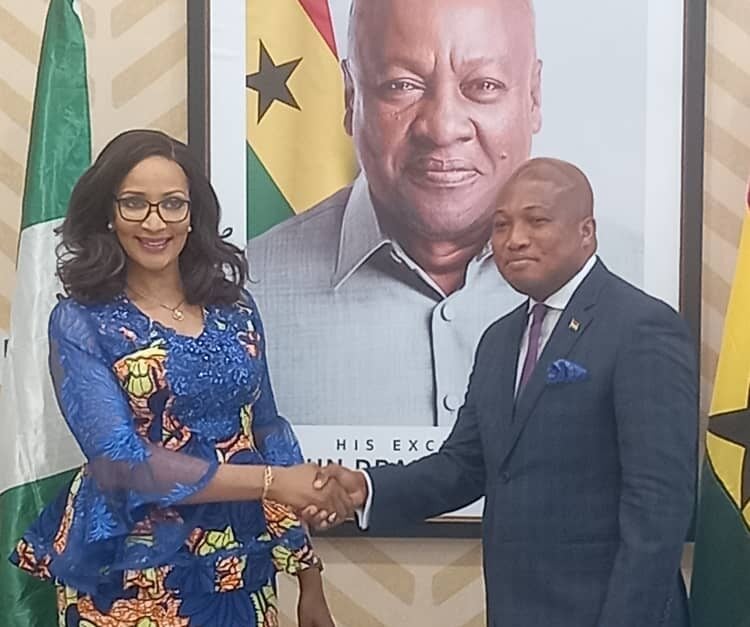
By Anne O. Krueger
While US President Donald Trump pursued a range of protectionist policies during his first term, the economic chaos and uncertainty he has unleashed since returning to the White House and launching his global trade war make those earlier efforts look mild by comparison.
Railing against countries that run trade surpluses with the US, Trump has vowed to impose “reciprocal tariffs” until all of America’s trade deficits are eliminated. Yet he has imposed sweeping tariffs even on countries with which the US runs a trade surplus, such as Australia.
The Trump administration has cited a wide range of reasons for its tariff hikes beyond reducing bilateral trade deficits, including national security, job creation, and raising government revenue.
Trump and his advisers claim that other countries will be forced to negotiate and ultimately lower their own tariffs on US goods. But the recent deal between the US and the United Kingdom, which imposes a 10% levy on most British exports, shows that even Trump’s “reduced” tariffs remain historically high.
The unpredictability of Trump’s trade policies poses a grave threat to the global economy. Trump’s tariff announcements have been followed by numerous delays and revisions, and his deadlines for finalizing new trade deals have come and gone, only to be extended again. This erratic trade policy, combined with his apparent reluctance to follow through on his threats, has given rise to the nickname “TACO,” or “Trump Always Chickens Out.”
So far, the Trump administration has secured new trade agreements with only a handful of countries, and even those have come with unexpected conditions. Earlier this month, for example, Trump announced a trade deal with Vietnam that imposes a 20% tariff on Vietnamese imports, but only if Vietnam eliminates its own tariffs on US goods and its exports contain no Chinese components; otherwise, the rate jumps to 40%.
While that’s lower than Trump’s original rate of 46%, it’s still far higher than the 11% that Vietnamese policymakers – caught off guard by his announcement – reportedly believed they had negotiated. Indonesia, for its part, accepted a 19% tariff in exchange for granting most US goods duty-free access to its domestic market. So much for fairness and reciprocity.
Similarly, tariffs on Chinese goods jumped from 10% to 145%, then were returned to 10% – at least temporarily. But the average US tariff on Chinese imports still stands at 51.1%, and Trump could raise it again if the two countries fail to reach a trade deal by August 12.
Trump has also threatened to impose 30% tariffs on the European Union and Mexico. While EU policymakers are hoping to avoid the tariffs through negotiations, they are reportedly considering retaliatory “anti-coercion” measures of their own.
Adding to the uncertainty are Trump’s tariff hikes and new restrictions on commodity imports. Since January, the US has raised steel, aluminum, and copper tariffs to 50% and imposed a 25% tariff on auto parts. Although he claims that his deal with China will ensure US access to rare-earth minerals, their status remains in limbo amid ongoing trade tensions.
The entire process has been marked by confusion and inconsistency. For example, the administration imposed tariffs on imported urea – a key fertilizer input – from Qatar and Algeria, but not from Russia. As a result, by May, Russia was supplying 64% of urea imports to the US, double its previous share.
As if that weren’t enough, some of Trump’s actions serve no discernible economic purpose. Most notably, he has threatened to hit Brazil with 50% tariffs to pressure its government not to prosecute former president – and Trump ally – Jair Bolsonaro. Likewise, he reimposed tariffs on aluminum and steel imports, despite clear evidence that job losses due to increases in input costs were far greater than the employment gains in protected industries during his first term.
When tariffs vary by country and can change at a moment’s notice, chaos is inevitable. There are currently more than 10,000 tariff classifications covering imports from over 160 countries. This means there could be more than one million different tariff rates, leaving customs officials and shippers to navigate an increasingly unmanageable system.
Many of Trump’s tariffs are ostensibly intended to strengthen national security, but it’s difficult to see how targeting allies like Canada helps achieve that goal, especially since cutting off foreign suppliers would only drive up the cost of defense procurement. Moreover, allied countries could help the US increase production of certain goods when necessary, thereby supporting domestic capacity.
Trump’s tariffs will harm the US economy in several significant ways. For starters, contrary to Trump’s claims, raising tariffs does not reduce trade deficits. On the contrary, it undermines investment and trade, increases the real cost of imported goods, and provokes retaliation, hurting exports.
The irony is that increased domestic production, spurred by protectionist policies, reduces the volume of imports – and with it, tariff revenues. In some cases, tariffs work at cross purposes: steel tariffs, for example, raise input costs for automakers. Consequently, tariff revenues will likely fall far short of the administration’s expectations.
As for job creation, some firms benefiting from tariff protection may invest in automation to replace human workers, especially in industries that rely on low-skilled labor. By contrast, firms in import-competing or export-oriented sectors are likely to respond to ongoing uncertainty over future tariffs by delaying capacity expansion.
Another troubling consequence of the current tariff regime is the increasingly visible rise of crony capitalism, as a steady stream of foreign officials and American business executives descends on Washington to lobby for tariff exemptions and protections.
Six months into his second presidency, it is abundantly clear that there is no coherent rationale behind Trump’s tariffs. They are costly and haphazard, undermining economic growth and turning the free market that once drove US productivity into a breeding ground for rent-seeking and corruption.
Anne O. Krueger, a former World Bank chief economist and former first deputy managing director of the International Monetary Fund, is Senior Research Professor of International Economics at the Johns Hopkins University School of Advanced International Studies and Senior Fellow at the Center for International Development at Stanford University.
The post Trump’s self-defeating trade agenda appeared first on The Business & Financial Times.
Read Full Story

















Facebook
Twitter
Pinterest
Instagram
Google+
YouTube
LinkedIn
RSS